2009 黑龙江考研英语一真题及答案
Section I Use of English
Read the following text. Choose the best word(s) for each numbered blank and mark
A, B, C or D on ANSWER SHEET 1. (10 points)
Research on animal intelligence always makes me wonder just how smart humans are.
1 the fruit-fly experiments described in Carl Zimmer’s piece in the Science Times
on Tuesday. Fruit flies who were taught to be smarter than the average fruit fly
2 to live shorter lives. This suggests that 3 bulbs burn longer, that there is an
4 in not being too terrifically bright.
Intelligence, it 5 out, is a high-priced option. It takes more upkeep, burns more
fuel and is slow 6 the starting line because it depends on learning — a gradual
7 — instead of instinct. Plenty of other species are able to learn, and one of the
things they’ve apparently learned is when to 8 .
Is there an adaptive value to 9 intelligence? That’s the question behind this new
research. I like it. Instead of casting a wistful glance 10 at all the species we’
ve left in the dust I.Q.-wise, it implicitly asks what the real 11 of our own
intelligence might be. This is 12 the mind of every animal I’ve ever met.
Research on animal intelligence also makes me wonder what experiments animals would
13 on humans if they had the chance. Every cat with an owner, 14 , is running a
small-scale study in operant conditioning. we believe that 15 animals ran the labs,
they would test us to 16 the limits of our patience, our faithfulness, our memory
for terrain. They would try to decide what intelligence in humans is really 17 ,
not merely how much of it there is. 18 , they would hope to study a 19 question:
Are humans actually aware of the world they live in? 20 the results are inconclusive.
1. [A] Suppose [B] Consider [C] Observe [D] Imagine
2. [A] tended [B] feared [C] happened [D] threatened
3. [A] thinner [B] stabler [C] lighter [D] dimmer
4. [A] tendency [B] advantage [C] inclination [D] priority
5. [A] insists on [B] sums up [C] turns out [D] puts forward
6. [A] off [B] behind [C] over [D] along
�
7. [A] incredible [B] spontaneous [C]inevitable [D] gradual
8. [A] fight [B] doubt [C] stop [D] think
9. [A] invisible [B] limited [C] indefinite [D] different
10. [A] upward [B] forward [C] afterward [D] backward
11. [A] features [B] influences [C] results [D] costs
12. [A] outside [B] on [C] by [D] across
13. [A] deliver [B] carry [C] perform [D] apply
14. [A] by chance [B] in contrast [C] as usual [D] for instance
15. [A] if [B] unless [C] as [D] lest
16. [A] moderate [B] overcome [C] determine [D] reach
17. [A] at [B] for [C] after [D] with
18. [A] Above all [B] After all [C] However [D] Otherwise
19. [A] fundamental [B] comprehensive [C] equivalent [D] hostile
20. [A] By accident [B] In time [C] So far [D] Better still
Section II Reading Comprehension
Part A
Directions:
Read the following four texts. Answer the questions below each text by choosing A,
B, C or D. Mark your answers on ANSWER SHEET 1. (40 points)
Text1
Habits are a funny thing. We reach for them mindlessly, setting our brains on
auto-pilot and relaxing into the unconscious comfort of familiar routine. “Not
choice, but habit rules the unreflecting herd,” William Wordsworth said in the 19th
century. In the ever-changing 21st century, even the word“habit”carries a negative
connotation.
�
So it seems antithetical to talk about habits in the same context as creativity and
innovation. But brain researchers have discovered that when we consciously develop
new habits, we create parallel synaptic paths, and even entirely new brain cells,
that can jump our trains of thought onto new, innovative tracks.
But don’t bother trying to kill off old habits; once those ruts of procedure are
worn into the hippocampus, they’re there to stay. Instead, the new habits we
deliberately ingrain into ourselves create parallel pathways that can bypass those
old roads.
“The first thing needed for innovation is a fascination with wonder,” says Dawna
Markova, author of “ The Open Mind ” and an executive change consultant for
Professional Thinking Partners. “But we are taught instead to ‘decide,’ just as
our president calls himself ‘the Decider.’ ” She adds, however, that “to decide
is to kill off all possibilities but one. A good innovational thinker is always
exploring the many other possibilities.”
All of us work through problems in ways of which we’re unaware, she says. Researchers
in the late 1960 covered that humans are born with the capacity to approach challenges
in four primary ways: analytically, procedurally, relationally (or collaboratively)
and innovatively. At puberty, however, the brain shuts down half of that capacity,
preserving only those modes of thought that have seemed most valuable during the
first decade or so of life.
The current emphasis on standardized testing highlights analysis and procedure,
meaning that few of us inherently use our innovative and collaborative modes of
thought. “This breaks the major rule in the American belief system — that anyone
can do anything,” explains M. J. Ryan, author of the 2006 book “This Year I Will...”
and Ms. Markova’s business partner. “That’s a lie that we have perpetuated, and
it fosters commonness. Knowing what you’re good at and doing even more of it creates
excellence.” This is where developing new habits comes in.
21. The view of Wordsworth habit is claimed by being
A. casual B. familiar C. mechanical D. changeable.
22. The researchers have discovered that the formation of habit can be
A. predicted B. regulated C. traced D. guided
23.” ruts”(in line one, paragraph 3) has closest meaning to
A. tracks B. series C. characteristics D. connections
�
24. Ms. Markova’s comments suggest that the practice of standard testing ?
A, prevents new habits form being formed
B, no longer emphasizes commonness
C, maintains the inherent American thinking model
D, complies with the American belief system
25. Ryan most probably agree that
A. ideas are born of a relaxing mind
B. innovativeness could be taught
C. decisiveness derives from fantastic ideas
D. curiosity activates creative minds
Text 2
It is a wise father that knows his own child, but today a man can boost his paternal
(fatherly) wisdom – or at least confirm that he’s the kid’s dad. All he needs
to do is shell our $30 for paternity testing kit (PTK) at his local drugstore –
and another $120 to get the results.
More than 60,000 people have purchased the PTKs since they first become available
without prescriptions last years, according to Doug Fog, chief operating officer
of Identigene, which makes the over-the-counter kits. More than two dozen companies
sell DNA tests Directly to the public , ranging in price from a few hundred dollars
to more than $2500.
Among the most popular : paternity and kinship testing , which adopted children can
use to find their biological relatives and latest rage a many passionate
genealogists-and supports businesses that offer to search for a family’s geographic
roots .
Most tests require collecting cells by webbing saliva in the mouth and sending it
to the company for testing. All tests require a potential candidate with whom to
compare DNA.
But some observers are skeptical, “There is a kind of false precision being hawked
�
by people claiming they are doing ancestry testing,” says Trey Duster, a New York
University sociologist. He notes that each individual has many ancestors-numbering
in the hundreds just a few centuries back. Yet most ancestry testing only considers
a single lineage, either the Y chromosome inherited through men in a father’s line
or mitochondrial DNA, which a passed down only from mothers. This DNA can reveal
genetic information about only one or two ancestors, even though, for example, just
three generations back people also have six other great-grandparents or, four
generations back, 14 other great-great-grandparents.
Critics also argue that commercial genetic testing is only as good as the reference
collections to which a sample is compared. Databases used by some companies don’
t rely on data collected systematically but rather lump together information from
different research projects. This means that a DNA database may differ depending
on the company that processes the results. In addition, the computer programs a
company uses to estimate relationships may be patented and not subject to peer review
or outside evaluation.
26.In paragraphs 1 and 2 , the text shows PTK’s ___________.
[A]easy availability
[B]flexibility in pricing
[C] successful promotion
[D] popularity with households
27. PTK is used to __________.
[A]locate one’s birth place
[B]promote genetic research
[C] identify parent-child kinship
[D] choose children for adoption
28. Skeptical observers believe that ancestry testing fails to__________.
[A]trace distant ancestors
[B] rebuild reliable bloodlines
[C] fully use genetic information
�
[D] achieve the claimed accuracy
29. In the last paragraph ,a problem commercial genetic testing faces is __________.
[A]disorganized data collection
[B] overlapping database building
30. An appropriate title for the text is most likely to be__________.
[A]Fors and Againsts of DNA testing
[B] DNA testing and It’s problems
[C]DNA testing outside the lab
[D] lies behind DNA testing
Text 3
The relationship between formal education and economic growth in poor countries is
widely misunderstood by economists and politicians alike progress in both area is
undoubtedly necessary for the social, political and intellectual development of
these and all other societies; however, the conventional view that education should
be one of the very highest priorities for promoting rapid economic development in
poor countries is wrong. We are fortunate that is it, because new educational systems
there and putting enough people through them to improve economic performance would
require two or three generations. The findings of a research institution have
consistently shown that workers in all countries can be trained on the job to achieve
radical higher productivity and, as a result, radically higher standards of living.
Ironically, the first evidence for this idea appeared in the United States. Not long
ago, with the country entering a recessing and Japan at its pre-bubble peak. The
U.S. workforce was derided as poorly educated and one of primary cause of the poor
U.S. economic performance. Japan was, and remains, the global leader in
automotive-assembly productivity. Yet the research revealed that the U.S. factories
of Honda Nissan, and Toyota achieved about 95 percent of the productivity of their
Japanese countere pants a result of the training that U.S. workers received on the
job.
More recently, while examing housing construction, the researchers discovered that
illiterate, non-English- speaking Mexican workers in Houston, Texas, consistently
met best-practice labor productivity standards despite the complexity of the
�
building industry’s work.
What is the real relationship between education and economic development? We have
to suspect that continuing economic growth promotes the development of education
even when governments don’t force it. After all, that’s how education got started.
When our ancestors were hunters and gatherers 10,000 years ago, they didn’t have
time to wonder much about anything besides finding food. Only when humanity began
to get its food in a more productive way was there time for other things.
As education improved, humanity’s productivity potential, they could in turn afford
more education. This increasingly high level of education is probably a necessary,
but not a sufficient, condition for the complex political systems required by
advanced economic performance. Thus poor countries might not be able to escape their
poverty traps without political changes that may be possible only with broader formal
education. A lack of formal education, however, doesn’t constrain the ability of
the developing world’s workforce to substantially improve productivity for the
forested future. On the contrary, constraints on improving productivity explain why
education isn’t developing more quickly there than it is.
31. The author holds in paragraph 1 that the important of education in poor countries
___________.
[A] is subject groundless doubts
[B] has fallen victim of bias
[C] is conventional downgraded
[D] has been overestimated
32. It is stated in paragraph 1 that construction of a new education system
__________.
[A]challenges economists and politicians
[B]takes efforts of generations
[C] demands priority from the government
[D] requires sufficient labor force
33.A major difference between the Japanese and U.S workforces is that __________.
[A] the Japanese workforce is better disciplined
�
[B] the Japanese workforce is more productive
[C]the U.S workforce has a better education
[D] ]the U.S workforce is more organize
34. The author quotes the example of our ancestors to show that education emerged
__________.
[A] when people had enough time
[B] prior to better ways of finding food
[C] when people on longer went hung
[D] as a result of pressure on government
35. According to the last paragraph , development of education __________.
[A] results directly from competitive environments
[B] does not depend on economic performance
[C] follows improved productivity
[D] cannot afford political changes
Text 4
The most thoroughly studied in the history of the new world are the ministers and
political leaders of seventeenth-century New England. According to the standard
history of American philosophy, nowhere else in colonial America was “So much
important attached to intellectual pursuits ” According to many books and articles,
New England ’ s leaders established the basic themes and preoccupations of an
unfolding, dominant Puritan tradition in American intellectual life.
To take this approach to the New Englanders normally mean to start with the Puritans’
theological innovations and their distinctive ideas about the church-important
subjects that we may not neglect. But in keeping with our examination of southern
intellectual life, we may consider the original Puritans as carriers of European
culture adjusting to New world circumstances. The New England colonies were the
scenes of important episodes in the pursuit of widely understood ideals of civility
and virtuosity.
�

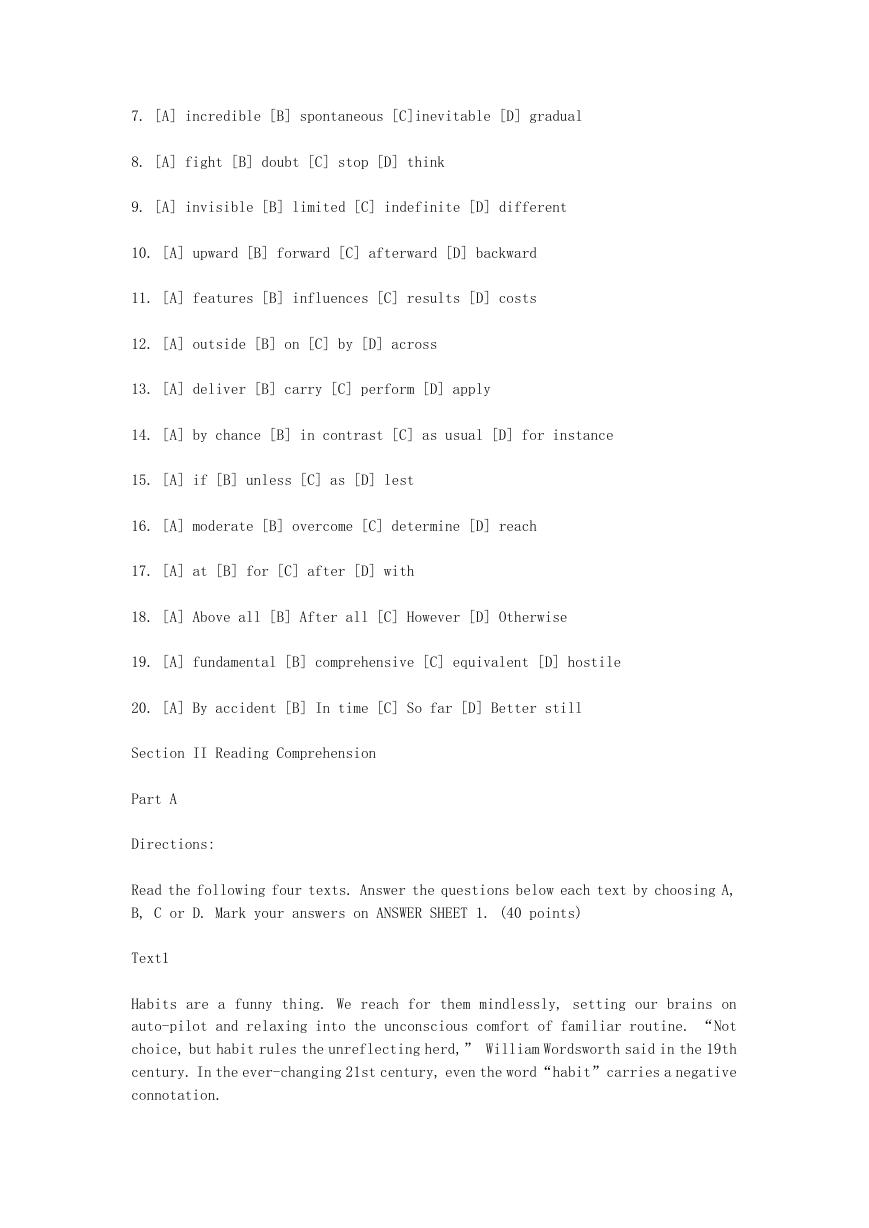
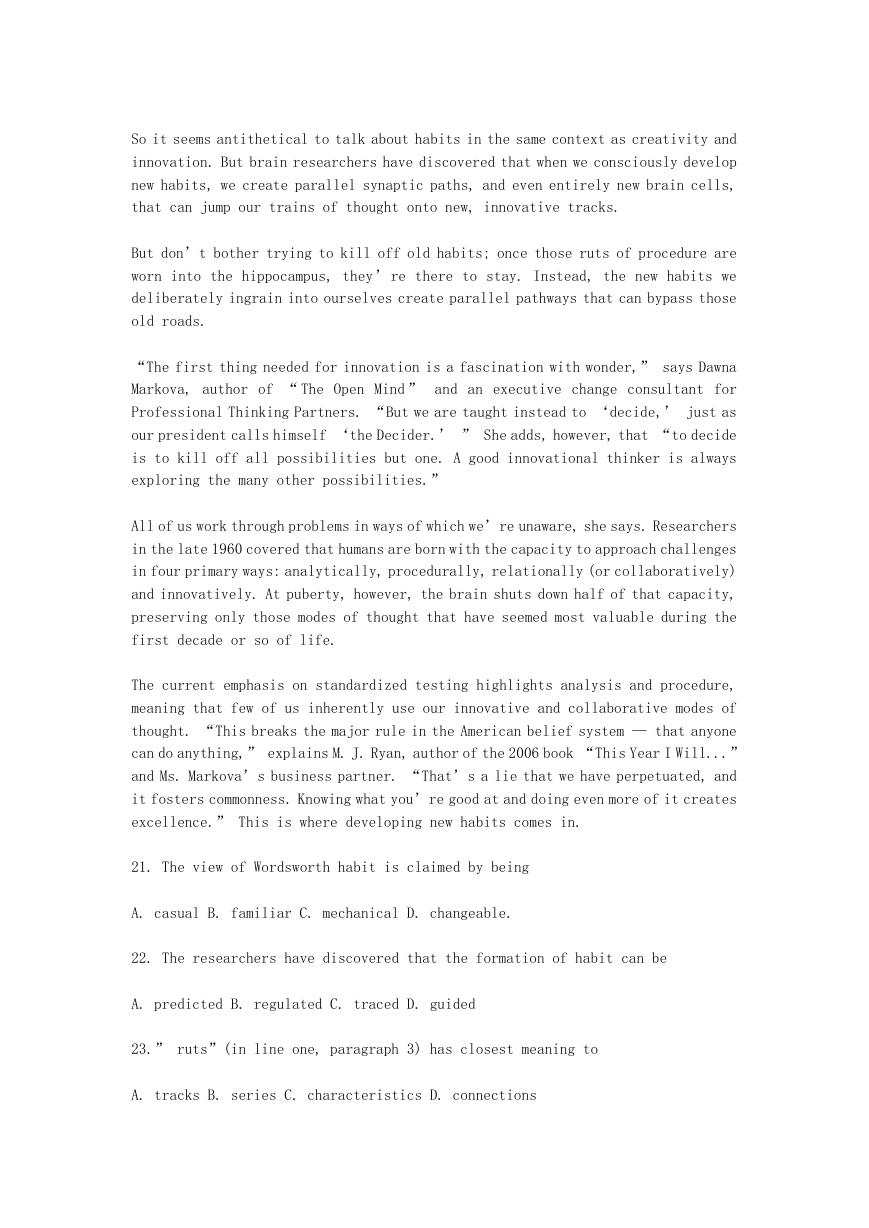
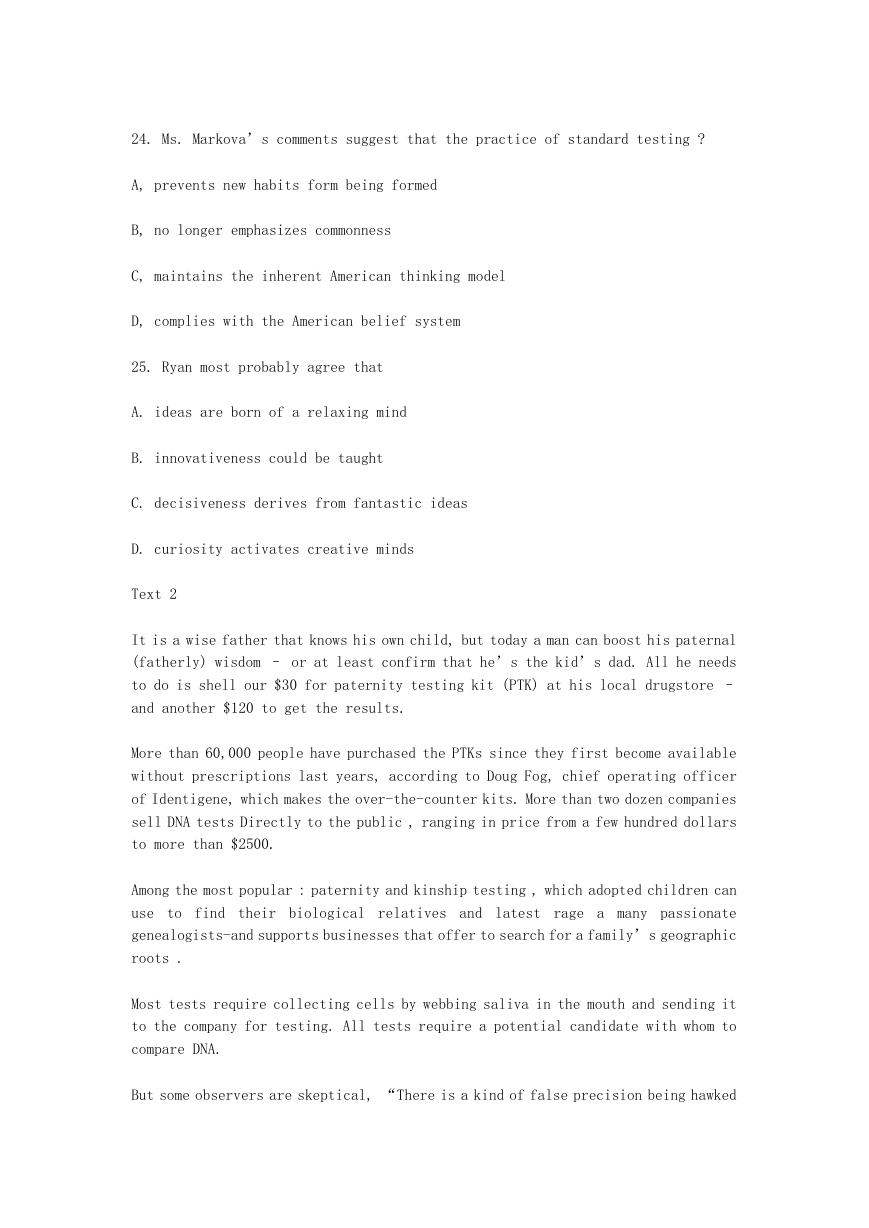
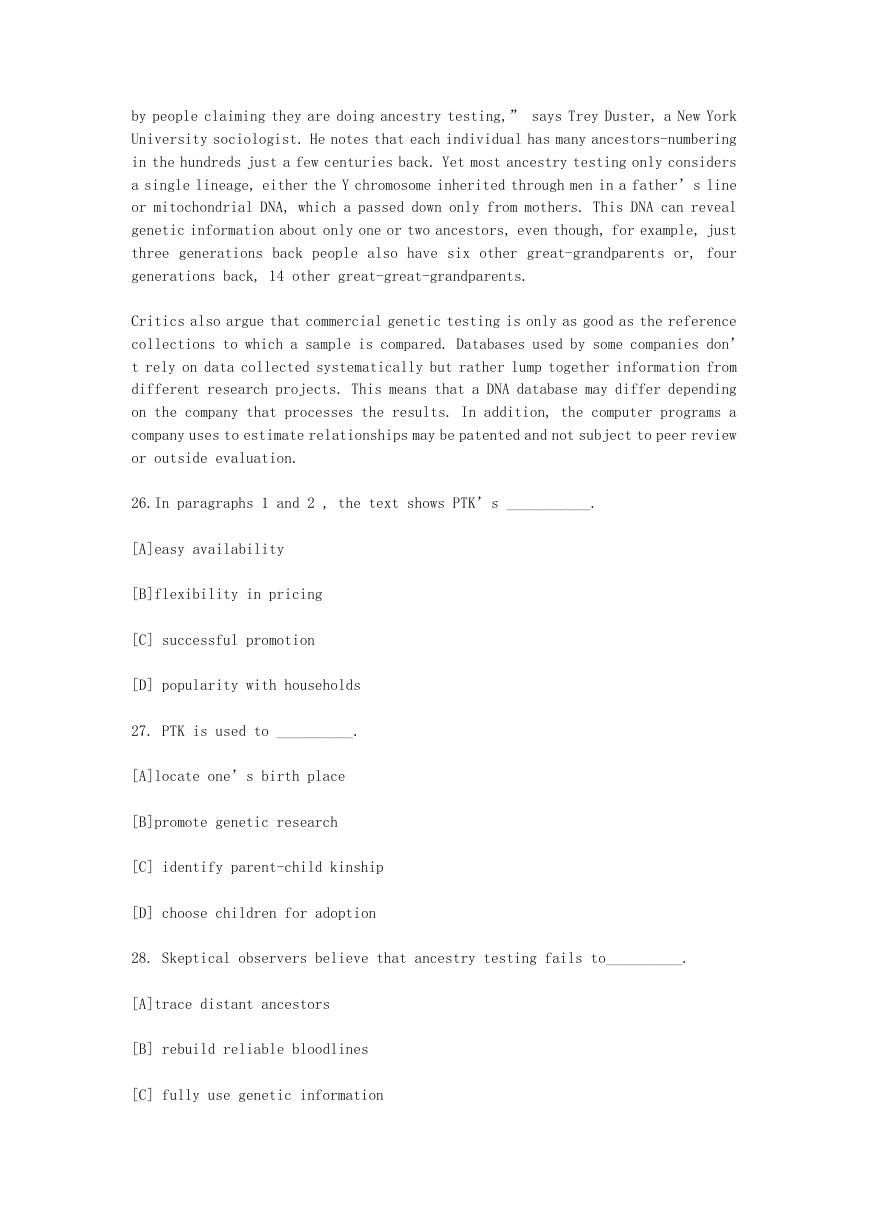
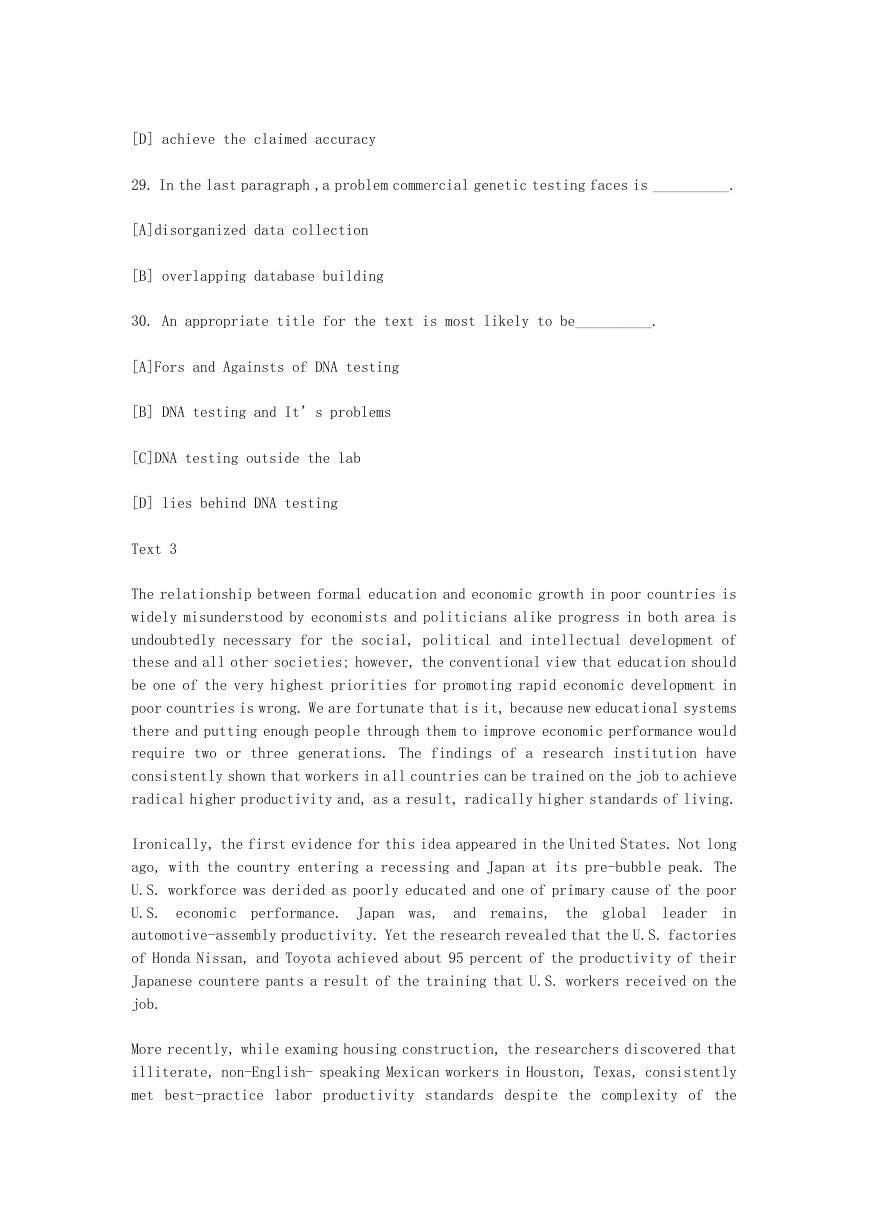
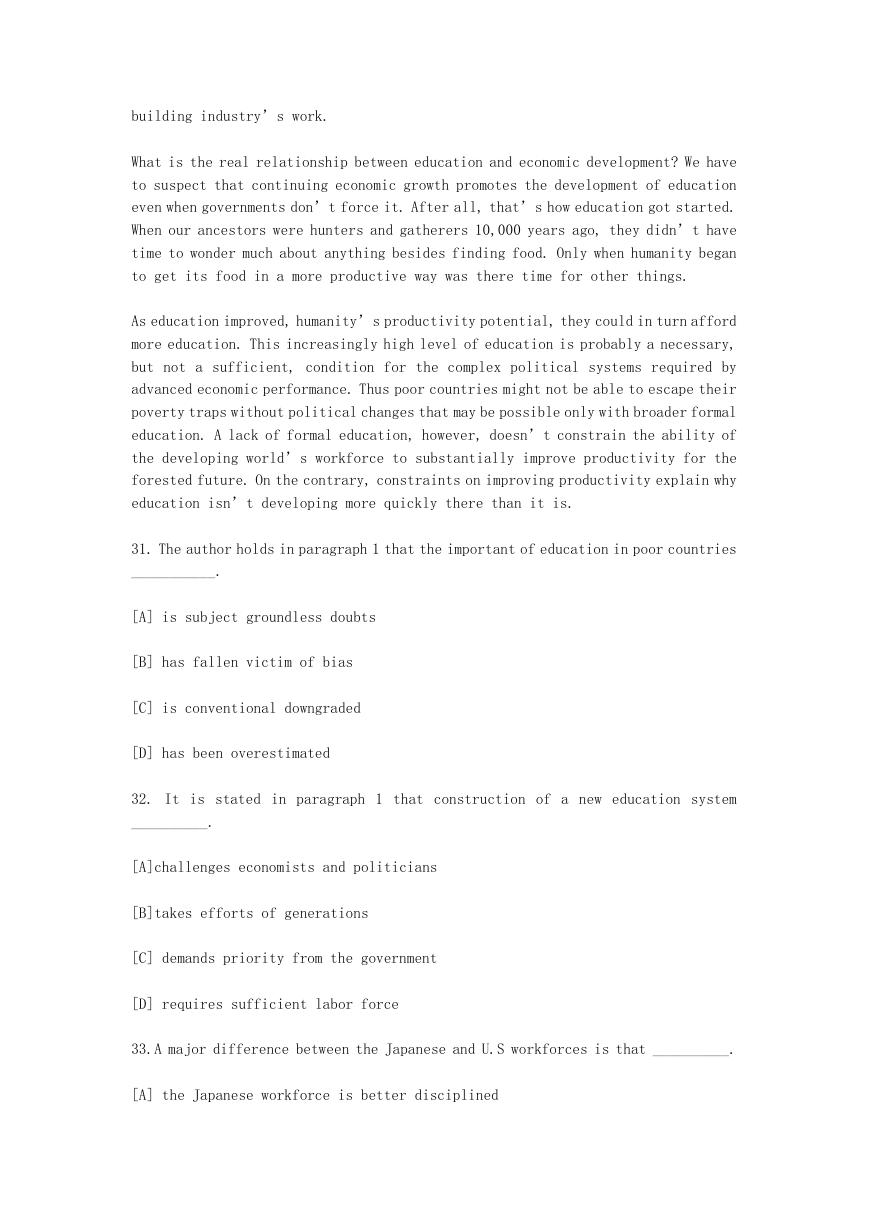
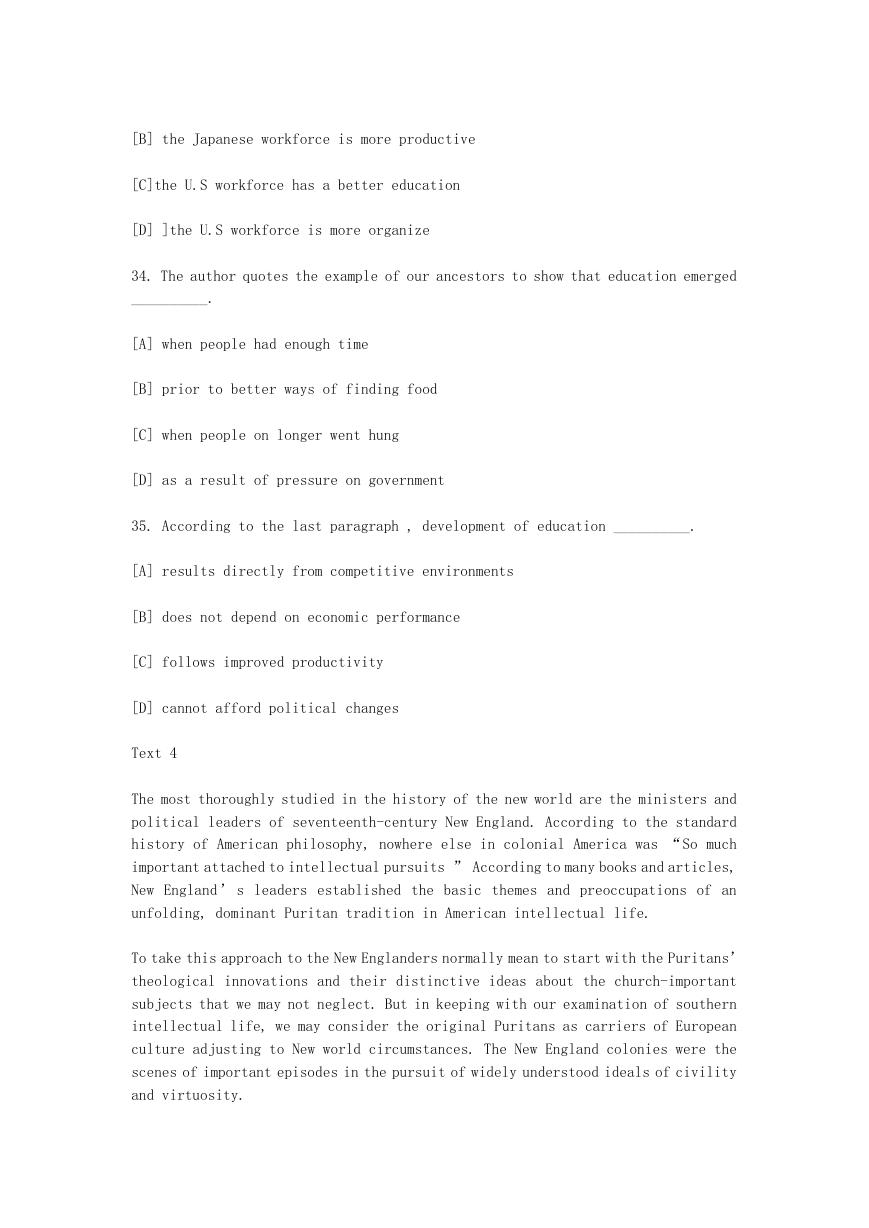








 2023年江西萍乡中考道德与法治真题及答案.doc
2023年江西萍乡中考道德与法治真题及答案.doc 2012年重庆南川中考生物真题及答案.doc
2012年重庆南川中考生物真题及答案.doc 2013年江西师范大学地理学综合及文艺理论基础考研真题.doc
2013年江西师范大学地理学综合及文艺理论基础考研真题.doc 2020年四川甘孜小升初语文真题及答案I卷.doc
2020年四川甘孜小升初语文真题及答案I卷.doc 2020年注册岩土工程师专业基础考试真题及答案.doc
2020年注册岩土工程师专业基础考试真题及答案.doc 2023-2024学年福建省厦门市九年级上学期数学月考试题及答案.doc
2023-2024学年福建省厦门市九年级上学期数学月考试题及答案.doc 2021-2022学年辽宁省沈阳市大东区九年级上学期语文期末试题及答案.doc
2021-2022学年辽宁省沈阳市大东区九年级上学期语文期末试题及答案.doc 2022-2023学年北京东城区初三第一学期物理期末试卷及答案.doc
2022-2023学年北京东城区初三第一学期物理期末试卷及答案.doc 2018上半年江西教师资格初中地理学科知识与教学能力真题及答案.doc
2018上半年江西教师资格初中地理学科知识与教学能力真题及答案.doc 2012年河北国家公务员申论考试真题及答案-省级.doc
2012年河北国家公务员申论考试真题及答案-省级.doc 2020-2021学年江苏省扬州市江都区邵樊片九年级上学期数学第一次质量检测试题及答案.doc
2020-2021学年江苏省扬州市江都区邵樊片九年级上学期数学第一次质量检测试题及答案.doc 2022下半年黑龙江教师资格证中学综合素质真题及答案.doc
2022下半年黑龙江教师资格证中学综合素质真题及答案.doc